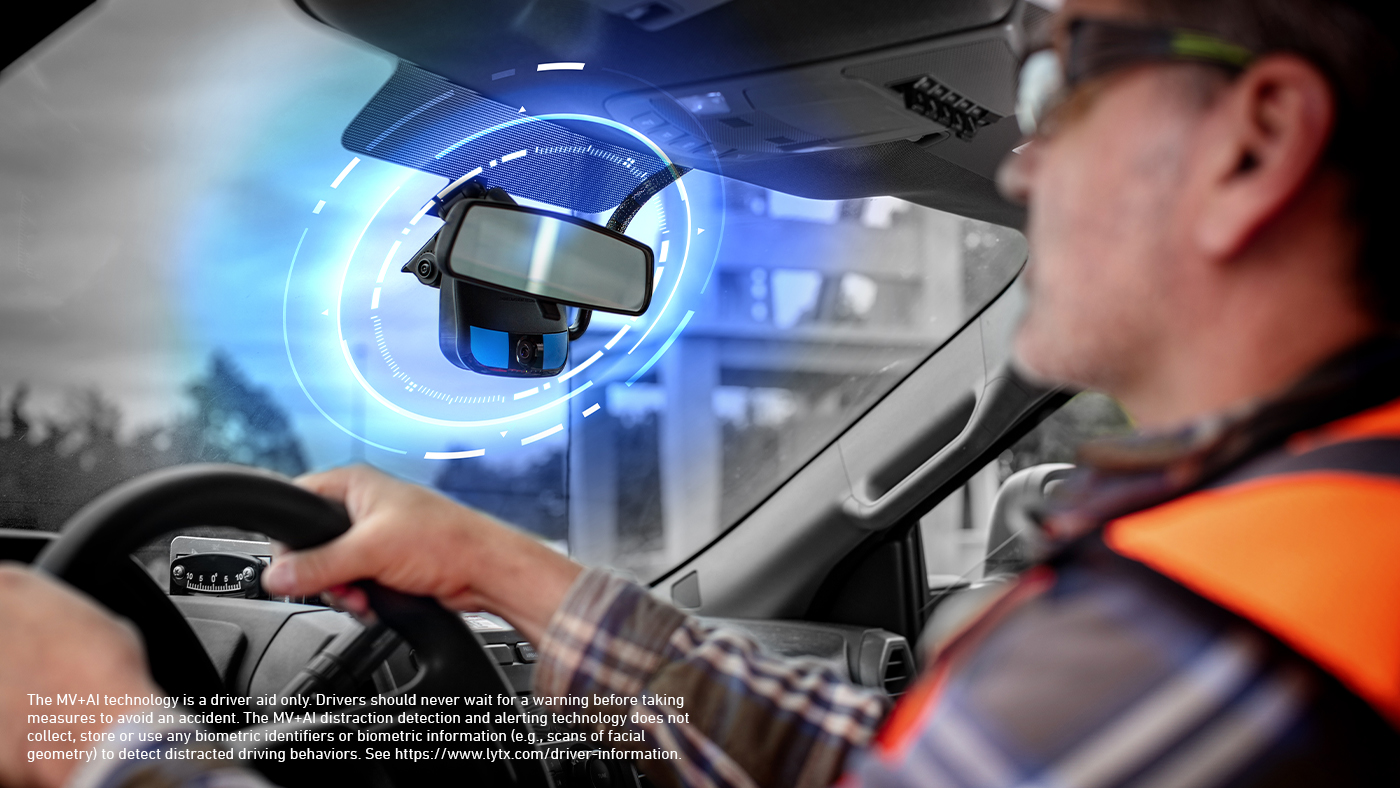Distracted Driving Guide: Statistics for Fleet Managers

What is distracted driving?
According to the National Highway Traffic Safety Administration (NHTSA), distracted driving is any activity that diverts attention away from the task of safe driving.1 Distracted driving examples include:
- Talking on the phone
- Texting
- Eating or drinking
- Smoking
- Interacting with other occupants
- Adjusting dashboards (CB radio, temperature controls, navigation system, etc.)
- "Getting lost in thought" or general distraction
The new technologies appearing in both passenger and commercial vehicles add more dangerous distractions behind the wheel, even when they are “hands free.”
Why is distracted driving hazardous? Bottom line: when a driver’s attention isn’t fully engaged, for any reason, their driving becomes unsafe and the risk of collision increases. The cost associated with distracted driving could be immense.
Types of driving distractions
The NHTSA has identified three types of driving distractions: visual, manual, and cognitive.



These types of distracted driving are not mutually exclusive. In fact, drivers who engage in one distracting behavior are more likely to juggle other risky behaviors at the same time.2 One of the most well-known examples is texting.
What is the biggest distraction for drivers involved in collisions?
Here is a real-life video of that exact situation as captured by a Lytx® DriveCam® dash cam:
The clip above is a perfect example of how one of the most frequent driving behaviors — texting — is also one of the most distracting and highest risk behaviors. A text pings a driver’s cell phone and they look down, picking up the phone to read the text and perhaps respond. This effectively takes their eyes, hands, and attention from the road ahead in one fell swoop. Thankfully, the driver was able to swerve in time to avoid a collision, but unfortunately, according to mounting statistics and evidence, that’s not always possible.
Distracted driving statistics
Reading about the dangers of distractions while driving and seeing proof in the numbers are very different things. One of the most effective ways to raise awareness and get employees to reduce these behaviors is by educating everyone about these powerful (and alarming) statistics:
- Multi-tasking—eating, drinking, smoking, and using a cell phone—while driving increases the risk of collision by 100%.2
- 3,166 people were killed by distracted driving in 2017.3
- Cell phone use was reported as the distraction in 14% of all fatal distraction-affected crashes in 2017.3
- In commercial vehicle fleets, distraction is the second leading driver-related cause of fatal truck crashes.4
- Texting without looking at the road for 5 seconds while traveling at a speed of 55 mph is the equivalent of driving the length of a football field blindfolded.5
- The risk of a collision is increased by 7x when reaching for devices and 23x while texting.5
- Companies pay an average of $200K per auto incident and $3.6M per fatality for medium and heavy truck collisions.6
Distracted driving solutions for fleets
Reducing distracted driving in fleets starts and ends with building a strong safety culture.
Companies that are successful with this promote safety to the point that it’s embedded in both the culture and operations of the organization, encouraging drivers to “do the right thing” when no one is looking. Here are some foundational elements of a great driver safety program as one of the solutions to texting and driving:
Safety code of conduct
This is a document that outlines a company’s expectations and policies around safe driving. These codes typically include:
- A safety mission statement
- Specific examples of what qualifies as risky behavior
- Safety rules for daily operations
- Measurable health and safety goals
- Consequences for engaging in risky behaviors
- A clear incident reporting process
Technology to detect driver distractions
Video telematics, combined with machine vision and artificial intelligence (MV+AI) technology, can reveal how your drivers are performing and what’s really happening on the road at any given time. Lytx continues to expand its MV+AI capabilities to accurately detect and record instances of risky and distracted driving based on factors inside and outside of the vehicle, including:
- Handheld devices
- Not wearing a seatbelt
- Smoking
- Eating or drinking
- Rolling stops
- Following distance issues
- Lane departures
- Taking eyes off the road
- Texting while driving
Thanks to an unparalleled database of billions of miles of driving data that undergoes professional human review to validate and categorize risk, Lytx is able to deliver relevant and accurate insights, filtering out false positives to keep notifications actionable and workloads manageable.
For example, if someone is using a cell phone in a way that represents distraction and risk, even if it is out of direct view of the camera, the system will recognize the behavior and capture a video recording. Management will receive a notification of the problem along with a video clip in their dashboard, providing context that can be used to proactively coach drivers to change their behavior.
On-going driver coaching
The evidence companies gain from video solutions such as dash cams is only an antidote to distracted driving when it gets leveraged to coach drivers. The patterns and incidents that telematics, MV+AI, and video technology reveal can be used as powerful coaching and training tools.
For strong results, coaching needs to be an ongoing and consistent part of an organization’s safety practice. Sysco is a great example of a company that has made safety coaching a critical part of their operation.
One way to build coaching into your program is to have managers sit with drivers on a monthly basis, watch flagged video clips together, talk about how and why the driver was distracted, and discuss the risk that distraction represents. Conversations should stay focused on education over punishment.
Coaching can take on a variety of different forms, from weekly or monthly scheduled meetings to quick face-to-face conversations, to one-on-one meetings. Greater awareness and smart in-cab alerts can also help drivers to self-coach. Each company can tailor the feedback process to suit its needs.
Rewards and recognition
Companies that have successfully reduced distracted driving share another common feature—they recognize and reward safe behavior. By recognizing and rewarding drivers who demonstrate clear-eyed focus and good decision making while on the road, fleets can positively reinforce safe driving behaviors and help stop distracted driving. This gives employees concrete examples of how a company’s safety policies are applied in real life, demonstrates that strong performers will be rewarded and incentivized, and further embeds safety in the fleet’s culture.
How Lytx detects and helps prevent distracted driving
Finding solutions to help combat distracted driving is something Lytx has been doing for over 20 years, longer than any other company in the industry. Lytx’s video telematics systems have collected over 100 billion miles of driving data from more than one million vehicles worldwide. This massive and unique data set is the largest in the world, which has been used to develop innovative technology for improving fleet safety and performance.
Newly expanded machine vision + artificial intelligence capabilities
Lytx offers industry-leading technology to detect a wide range of risky behaviors by combining machine vision and artificial intelligence (MV+AI) with telematics sensors. Machine vision collects images from multiple sources, such as advanced sensors on vehicles. This data is then processed and analyzed by artificial intelligence algorithms to determine trends in events or behaviors, helping fleets detect and predict risk with more accuracy than ever before.
The algorithms are constantly getting “smarter” because our DriveCam cameras, the foundational hardware in all of our fleet management solutions, capture over 97.5 million miles of data every day. As this data accumulates, risk insights become more refined and fleets learn exactly where the biggest dangers hide on the road.
Our MV+AI technology allows us to identify risk both inside and outside the vehicle, helping companies detect and correct distractions with a high degree of accuracy for difficult to detect behaviors, including cell phone use and handheld device use, not wearing a seatbelt, eating or drinking, and smoking.
To learn more about how Lytx’s MV+AI video technology can help reduce distracted driving in your fleet, book a demo.
1 National Highway Traffic Safety Administration “Distracted Driving”
2 “Lytx Insights into Distracted Driving Among Commercial Drivers”
3 National Highway Traffic Safety Administration “Distracted Driving in Fatal Crashes, 2017”
4 Federal Motor Carrier Safety Administration “Large Truck and Bus Crash Facts 2016”
5 Lytx “Distracted and Drowsy Driving” Infographic
6 Federal Motor Carrier Safety Administration “Unit Costs of Medium and Heavy Truck Crashes”

